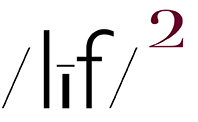all photos ~ (embiggenable)
AS YOU MIGHT KNOW BY NOW, MARTIN PARR shuffled off this mortal coil a few days ago. So, somewhat naturally, I pulled out my copy of The Last Resort book. Thought it was a good time for a refresh but, as it turned out, I didn’t need one inasmuch as I discovered that I practically knew all of the photos by heart. It would seem that they have etched a permanent home in my visual thinking brain.
That written, when I thought it might interesting to ask the wife to view the book and select which picture she might–if I held a gun to her head–like to have hanging on a wall in our house, I was rather surprised to discover that she had never previously looked at the book. Surprised cuz it–the book–has been hanging around the house for maybe 20 years or so.
In any event, on a fairly regular basis, I do ask her to view many of my photo books cuz I am always interested in a lay-person’s reaction / opinion to “fine-art” photography. She’s as lay as it gets–she’s neither an artist nor a photo maker of any kind and it surprises many people that an artist (me) and a lawyer (her) have manged to live together for 30 years without something going haywire–probably something about opposites attract thrown into the mix.
That written, she has spent many an hour at my side on gallery crawls and listening to me jabber on about things photography / art so she’s not exactly clueless about the subject. And, to be fair, I do value her input. Whatever the case, she did agree to take a look at the book ….
…. she was about 4 pictures into the book when she exclaimed, with an ear-to-ear grin on her face that “OMG, these pictures are awesome” and that was the first of a seemingly never ending flow of pure delight and amazement. Her connection to the pictures can certainly be attributed to the fact that they “spoke” to her about her summers on the seaside at Stone Harbor, NJ. However, I would be remiss not to mention that she also noted her keen appreciation for Parr’s stunning use of color. All in all, she truly loved the work, looked through the book 3x end-to-end and declared it to be the best photo book she has ever seen.
My take away from the experience is that Parr hit pay dirt inasmuch as he seems to have garnered appeal from an audience that is not part of the dedicated fine art photography crowd. For certain, in the case of the wife, while she “gets” work from Shore, Meyerowitz, Eggleston and host of other greats, her sheer delight and appreciation for The Last Resort is off the charts. And, it is my firm belief that, while she has not yet picked a photo that she would hang in our house, it wouldn’t surprise me if she said “All of them.”
And, FYI, I’m with her in that, iMo, Parr’s book is photography at its best.

